Key takeaways
- Changing perspective, even slightly, can fundamentally alter the story and emotions conveyed in photography.
- Three main types of perspective in travel photography include linear, aerial, and forced perspective, each influencing viewer perception uniquely.
- Practical techniques such as varying physical position, using natural frames, and exploring reflections can enhance photographic storytelling.
- Improving travel photography skills involves experimenting with different lenses, observing light, and practicing patience to capture authentic moments.
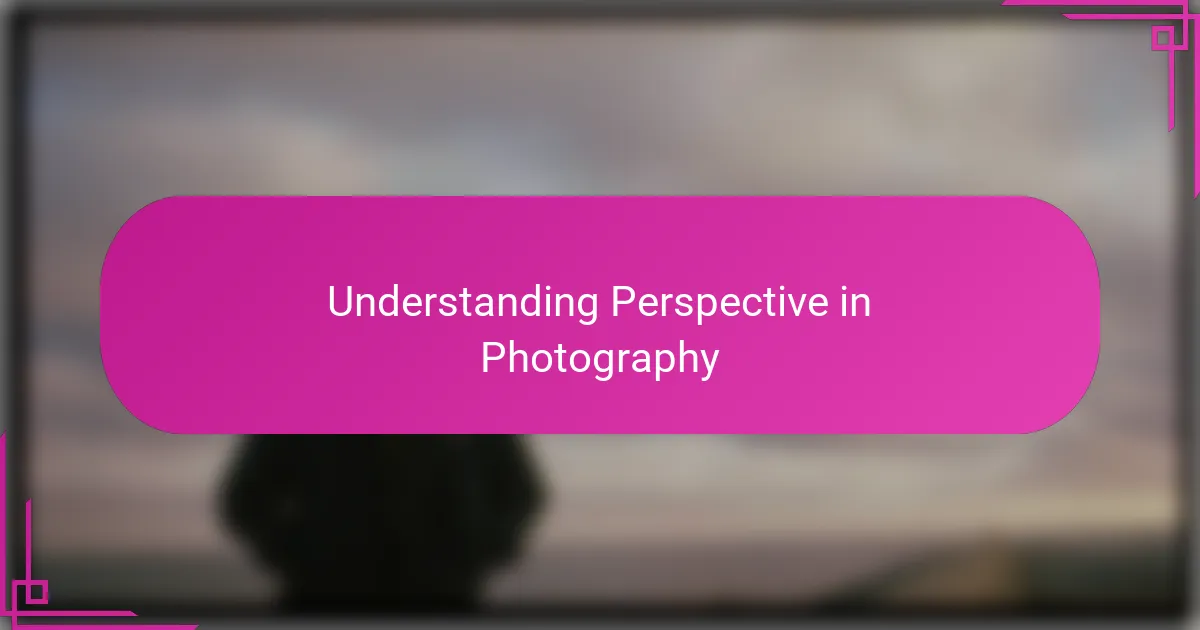
Understanding Perspective in Photography
Perspective in photography isn’t just about where you stand; it’s how you see the world through your camera. I’ve found that changing my viewpoint—even by a few inches—can completely alter the story an image tells. Have you ever noticed how crouching low or climbing higher shifts the mood and meaning of a shot?
What fascinates me most is how perspective guides the viewer’s eye and emotions. A wide-angle lens from close up can exaggerate distance and depth, creating a sense of vastness or intimacy depending on the subject. It’s almost like giving your audience a fresh pair of eyes to explore a scene.
Sometimes I wonder if perspective in photography mimics how we experience travel itself. Just as our mindset colors what we notice in a new place, the angle and framing we choose shape how others will connect with our images. It’s this blend of technical choice and personal expression that makes perspective such a powerful tool.
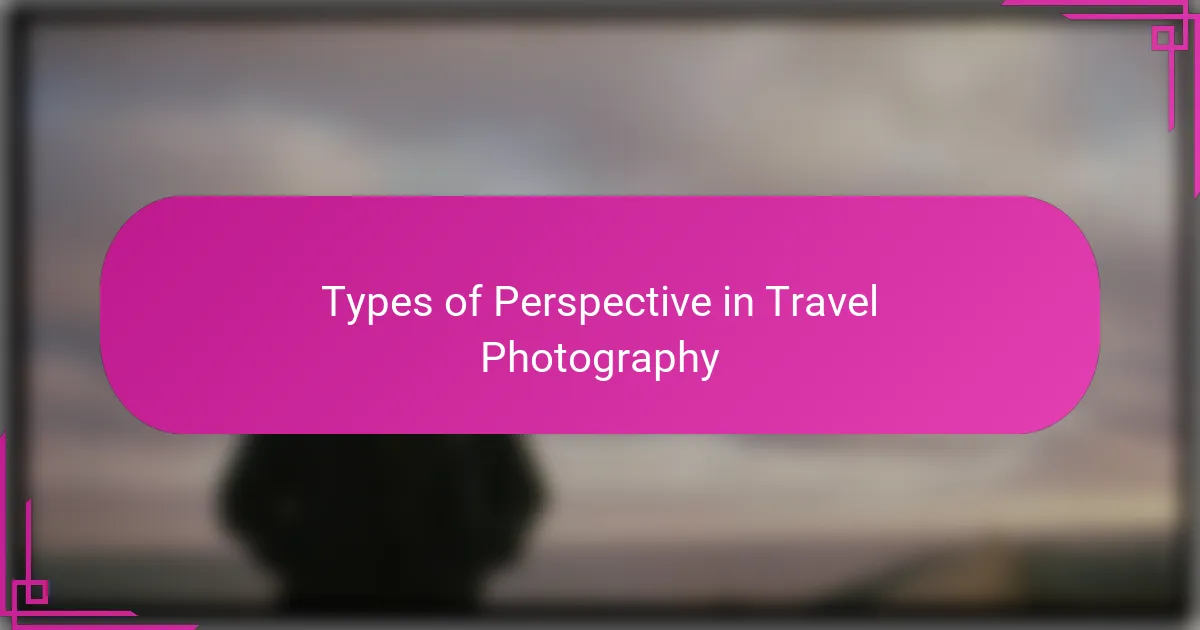
Types of Perspective in Travel Photography
When I think about types of perspective in travel photography, three main ones come to mind: linear, aerial, and forced perspective. Linear perspective uses converging lines to draw your eye deeper into the scene—like those winding streets in an old town that seem to pull you forward. I remember capturing a narrow alleyway in Lisbon where the buildings guided every step my eyes took; it made me feel like I was stepping into someone’s secret world.
Aerial perspective, on the other hand, plays with distance and atmosphere. Have you ever stood on a mountain and noticed how distant hills turn soft and bluish? That same effect can be captured in photos, giving a sense of vastness and mood. I often seek this out during early mornings when mist adds that magical layer between me and the horizon.
Forced perspective is more playful—it tricks the viewer’s eye to see scale differently. One time, I positioned myself so that I could “hold” the Leaning Tower of Pisa between my fingers. It’s a fun way to connect with a place and invite the viewer into a shared inside joke. Isn’t that the beauty of perspective? It not only shows a place but reveals how you uniquely experienced it.
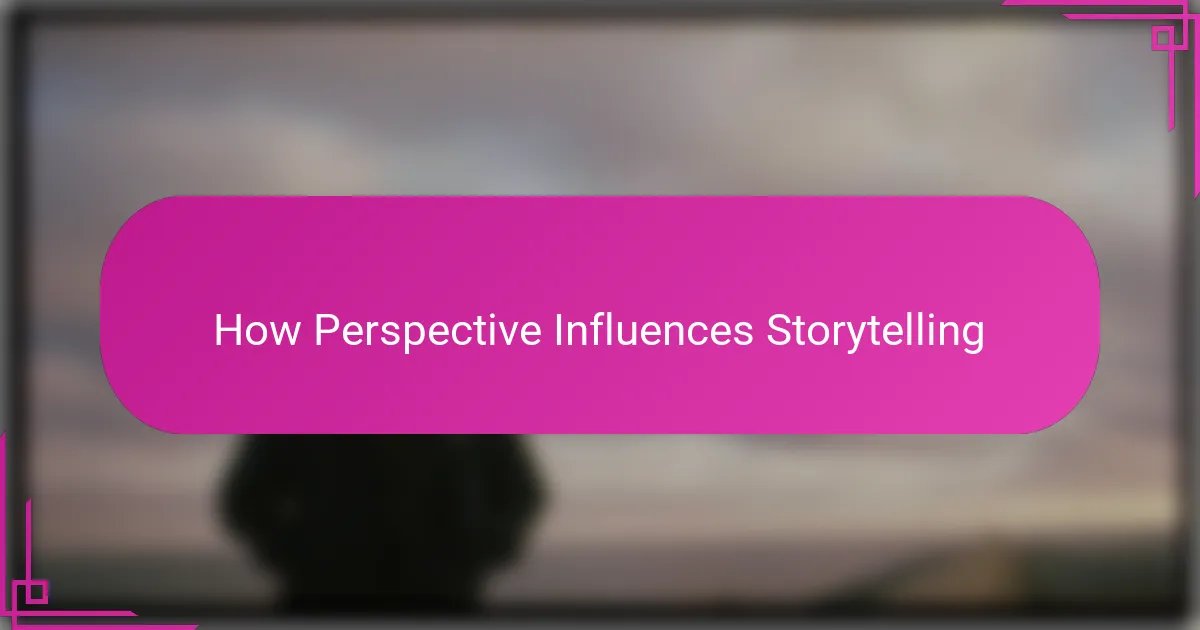
How Perspective Influences Storytelling
Perspective doesn’t just shape how a scene looks—it shapes the story behind it. I’ve noticed that by shifting my angle, I can emphasize different emotions: a low viewpoint might make a monument feel grand and imposing, while a higher vantage can reveal the bustling life swirling below, telling entirely different tales. Have you ever thought about how these subtle changes invite your viewers to feel something unique?
What strikes me is how perspective controls the narrative’s focus. For instance, zooming in tight on a traveler’s weathered hands clutching a map can speak volumes about their journey’s challenges, while a wide panorama might celebrate freedom and exploration. It’s like deciding what chapter of a story you want your photo to tell.
Sometimes, I capture a moment where the perspective reveals more than just a scene—it reveals a connection. When I shot a child playing amidst ancient ruins from ground level, the juxtaposition of innocence and history felt deeply poetic. That experience reminded me that perspective doesn’t just influence storytelling; it breathes life into it.
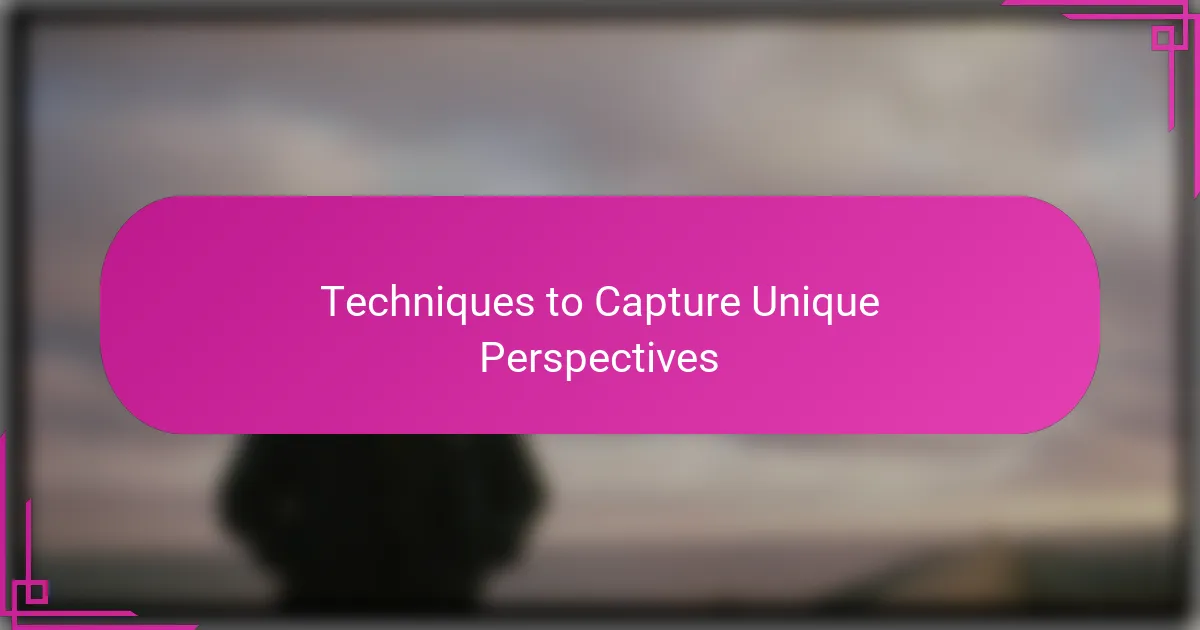
Techniques to Capture Unique Perspectives
One technique I often rely on to capture unique perspectives is simply changing my physical position. Getting down low on the ground or finding a hidden vantage point can transform an ordinary scene into something extraordinary. Have you ever tried lying on your stomach to shoot a street market? That angle can reveal unsuspected details and energy.
I also like to experiment with framing through natural elements like branches, windows, or arches. It’s amazing how a simple frame within the frame can guide the viewer’s eye and add layers to the story. Once, while photographing a bustling bazaar, I used a doorway to partially block the scene, making the photo feel like a secret glimpse rather than a tourist snapshot.
Another trick I frequently use is playing with reflections — puddles, mirrors, even shiny cars. Reflections can create surprising compositions and double meanings that catch people’s attention. I remember capturing a reflection of colorful buildings in a rain-soaked street, and it felt like the city was showing me a hidden version of itself. Isn’t that what makes travel photography so exciting? Finding those unexpected perspectives that reveal more than meets the eye.
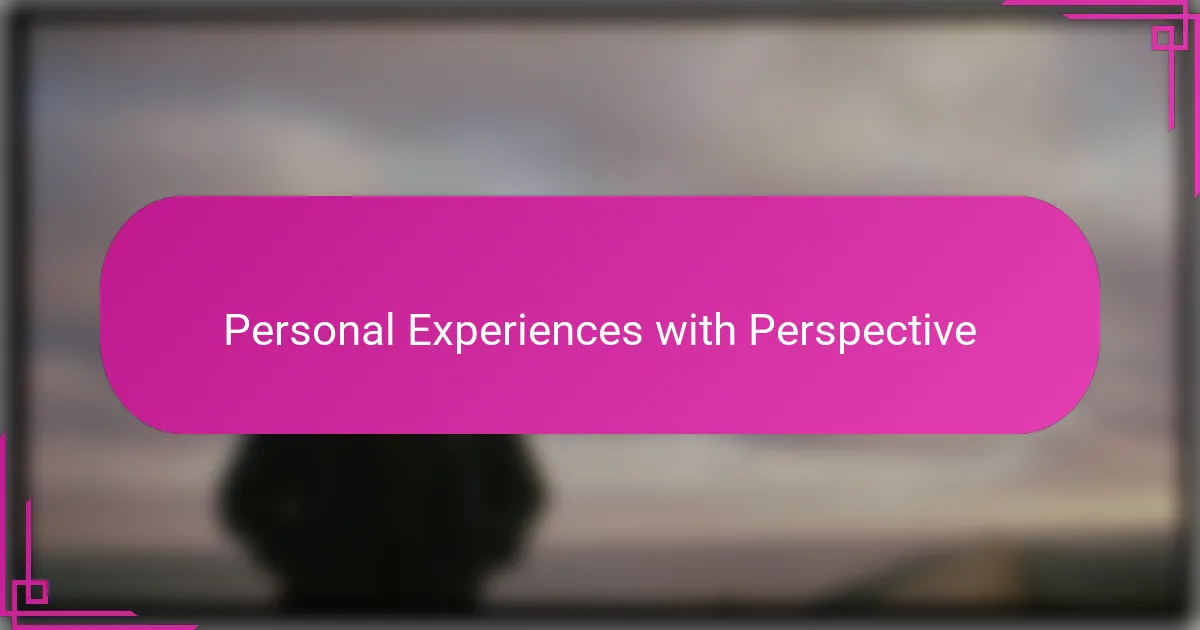
Personal Experiences with Perspective
One of my most memorable experiences with perspective came during a trip to Morocco. I was photographing a crowded market and decided to shoot from above a stairwell, capturing the vibrant chaos from a new angle. That simple shift transformed the scene from overwhelming noise into a beautifully organized mosaic of colors and shapes. Have you ever found that just changing where you stand can turn confusion into clarity?
I also recall a moment in Venice where I crouched low beside a canal. The reflections in the water created an almost dreamy double-world, and suddenly, a typical tourist scene felt intimate and poetic. That day taught me how perspective isn’t just about physical position—it’s about tuning into the mood and stories hidden beneath the obvious.
Sometimes, perspective surprises me by revealing connections I hadn’t noticed. While photographing children playing near ancient ruins in Greece, shooting from their eye level allowed me to capture the harmony between innocence and history. It’s in these moments that I realize perspective is more than technique—it’s a bridge to deeper understanding.
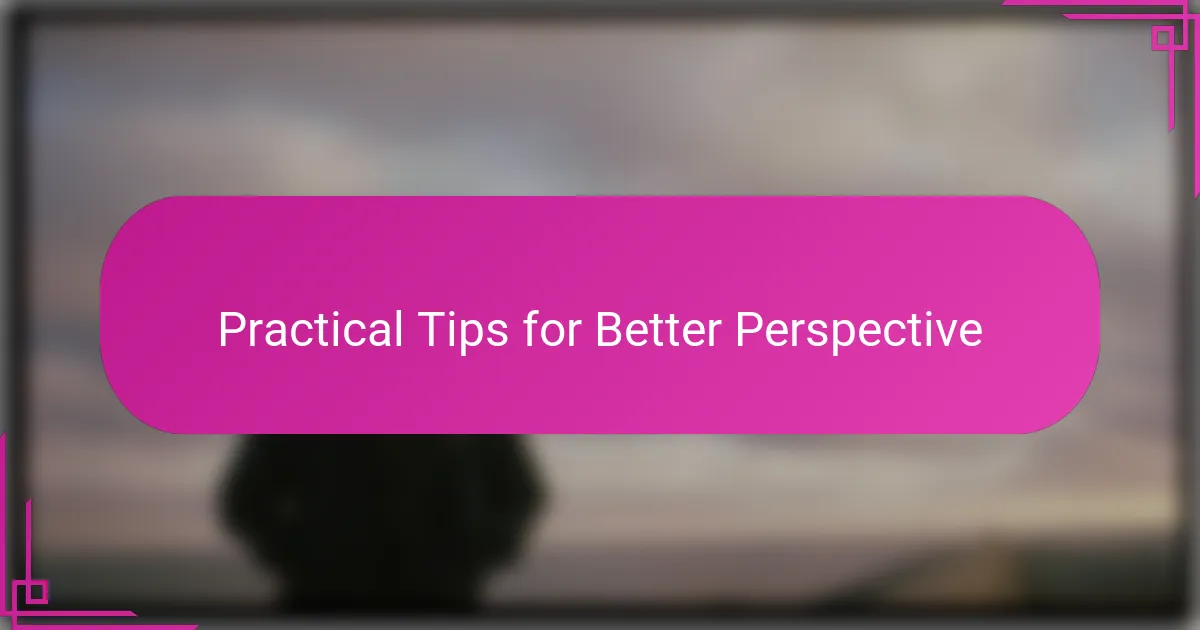
Practical Tips for Better Perspective
One practical tip I’ve learned is to move around your subject instead of standing still. Sometimes, just a small step to the left or right can reveal details you hadn’t noticed before. Have you ever tried circling a street performer to catch their expression from different angles? It’s like uncovering secret layers of the scene that make your photo come alive.
Using a wide-angle lens close to your subject can dramatically change perspective, making foreground objects pop while pushing the background farther away. I remember photographing a colorful door in a narrow alley—getting close with a wide lens made the textures almost tangible, inviting viewers to feel like they were right there. Don’t be afraid to get close and personal; perspective thrives on intimacy.
Lastly, consider the height from which you shoot. Shooting from waist level or down low can add a fresh viewpoint that surprises people. One time, lying flat to photograph a city fountain, I captured reflections and splashes that turned an everyday scene into a dynamic visual story. Isn’t it amazing how simply changing height can reshape what we see—and what others see through our lens?

Improving Your Travel Photography Skills
When I set out to improve my travel photography skills, experimenting with different lenses was a game-changer. Have you ever tried switching from a standard lens to a wide-angle or a telephoto while exploring a new city? I found that this simple shift not only varied my perspective but also helped me capture the story of a place in ways I hadn’t imagined.
Another habit I’ve developed is dedicating time to observe the light at different moments of the day. Shooting during the golden hour or even under overcast skies can completely transform your images. When I waited for softer light near a quiet beach, the colors and shadows spoke a whisper that gloriously narrated the scene’s mood.
Lastly, don’t underestimate the power of patience and curiosity. Instead of rushing, I sometimes just linger—letting the environment unfold naturally before my lens. Have you noticed how quiet moments often reveal the most authentic stories? That’s when your personal perspective truly begins to shine through your travel photography.